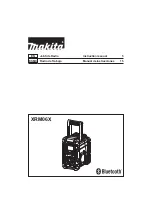
S&C Instruction Sheet 1074-510 5
Operation
IP Basics
SpeedNet ME radios use Internet Protocol (IP) version 4, and
all references to IP addresses in these installation instruc-
tions refer to IPv4 addresses. An IP address is the unique
identifier for a node (host connection) on an IP network.
The IP address is a 32-bit binary number, usually shown
as four decimal values separated by decimal points. Each
value represents 8 bits in the range 0 to 255 (known as
octets), and this is called “dotted decimal” notation.
For example: 172.26.220.200 can be viewed in binary
form:
172 .26 .220 .200
10 1 0 11 00.000 11 0 1 0.11 0 11100.11 00 1 000
Every IP address consists of two parts that identify the
network and the node. The address class and subnet mask
determine which part belongs to the network address and
which part belongs to the node address.
There are five address classes. The IP address class
can be determined by examining the first four bits of the
IP address:
• Class A addresses begin with 0xxx, or 1 to 126 decimal.
• Class B addresses begin with 10xx, or 128 to 191
decimal.
• Class C addresses begin with 110x, or 192 to 223 deci-
mal.
• Class D addresses begin with 1110, or 224 to 239 deci-
mal.
• Class E addresses begin with 1111, or 240 to 254 deci-
mal.
Addresses beginning with 01111111, or 127 decimal,
are reserved for loop-back and internal testing on a
local machine. This can be tested by pinging 127.0.0.1,
which points to the local machine. Class D addresses
are reserved for multicasting, and Class E addresses are
reserved for future use and should not be used for a host
address.
This is how the class determines, by default, which part
of the IP address belongs to the network (N) and which
part belongs to the node (n).
• Class A–NNNNNNNN.nnnnnnnn.nnnnnnnn.nnnnnnnn
• Cla ss B –NNNNNNNN.NNNNNNNN.nnnnnnnn.
nnnnnnnn
• Class C–NNNNNNNN.NNNNNNNN.NNNNNNNN.
nnnnnnnn
In the example, 172.26.220.200 is a Class B address,
so by default the network part of the address (known as
the network address) is defined by the first two octets
(172.26. x.x), and the node part is defined by the last two
octets (x.x.220.200).
To specify the network address in an IP address, the
node section is entered as zeros. In the example, 172.26.0.0
specifies the network address for 172.26.220.200. When the
node section is set to all “1”s, it specifies a broadcast sent to
all nodes on the network and is indicated as 172.26.255.255,
which is the broadcast address for the example. Note that
this is true for all classes, regardless of the length of the
node section.
































